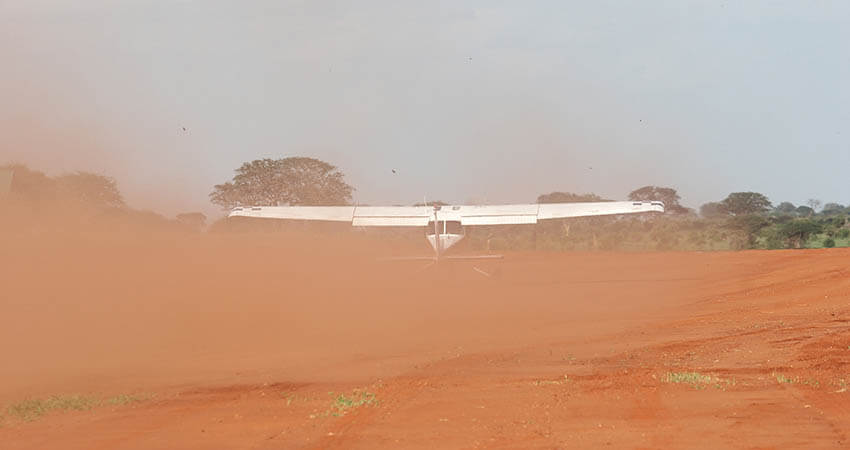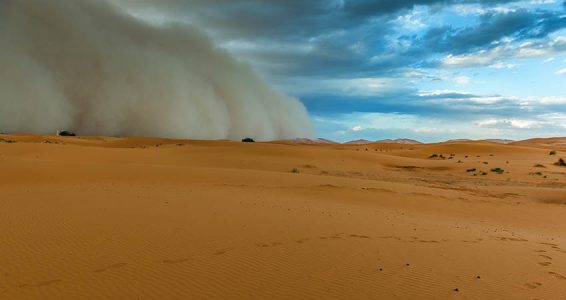Don’t let a dust storm soil your flight.
Dust storms can cause many issues for aircraft and aviation-related activities. Not only are these weather phenomena hard to predict, but they can happen in an instant. Below are some common dust storm hazards and why you should do everything you can to avoid them.
How they start.
A dust storm is comprised of loose, dry soil particles that are carried in the air by high winds. Usually dust storms come from arid regions; however, they can occur in other areas and soil types under the right conditions, i.e. drought, extreme winds, etc.
Dust Storm Facts:
- Dust storms form as a result of strong winds, which can affect aircraft controllability.
- The soil in the air impacts visibility; reports of dust storms causing visibility to drop as low as ⅛ mi (200 meters) aren’t uncommon.
- Dust storms can impact a large area, reaching amazing heights and depths, they can spread over hundreds of miles and rise well above 10,000 ft (3,050 meters).
- Blowing dust can get sucked into engines and not unlike volcanic ash and other dangerous particulates, can create flameouts, internal damage, or a complete failure.
- Dust storms can be created from the downdrafts associated with thunderstorms, especially in the American Southwest and Sahara region.
- A dust storm is also referred to as a haboob, which is Arabic for “strong wind.”

Predicting the unpredictable.
Dust storms are nearly impossible to predict. Meteorologists are usually only able to warn pilots of conditions favorable to developing a dust storm, rather than being able to accurately predict their time, location, or severity. After a dust storm has formed, the U.S. National Weather Service will release either one of two reports: 1) a “blowing dust advisory” or 2) a “dust storm warning.”
An “advisory” means visibility conditions are between ¼ to 1 mile (0.4 to 1.6 kilometers) and winds are 25 mph (40 kph) or greater. A “warning” is released when visibility drops below ¼ mile (0.4 kilometers) and wind is are above 25 mph (40 kph). Although 25 mph (40 kph) is the minimum criteria, winds usually range from 40 to 60 mph (65 to 95 kph) in normal storms.
Dust storms are extremely dangerous and unpredictable. As with thunderstorms, severe weather predictions, or volcanic ash, it is best to avoid areas with any reported or forecast extreme conditions. If you find yourself in an area where dust storm conditions were not reported or forecast, land as soon as possible. Remember to send in PIREPs and notify ATC when encountering any unusual weather conditions. With extremely low visibility, strong winds, and possible/probable engine damage, dust storms are not something to try to fly through.
RELATED CTS TRAINING










